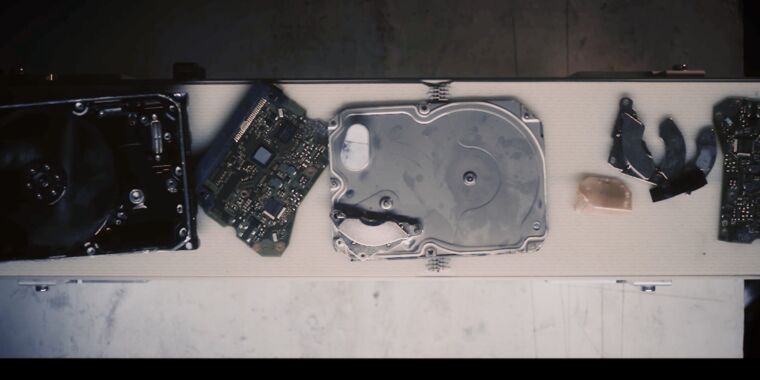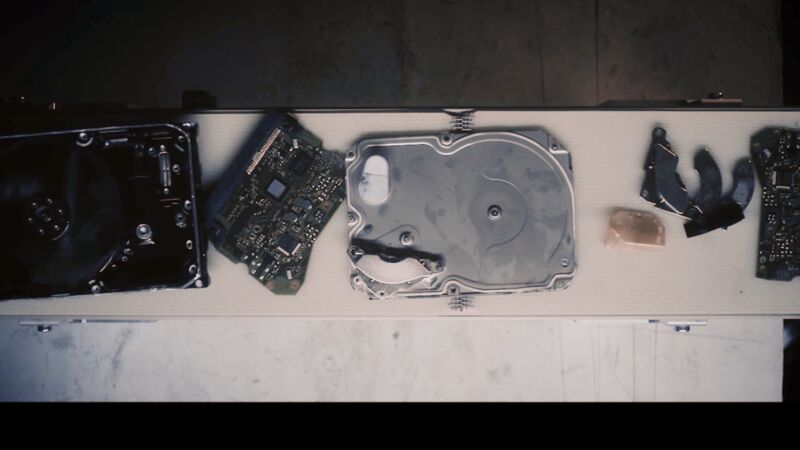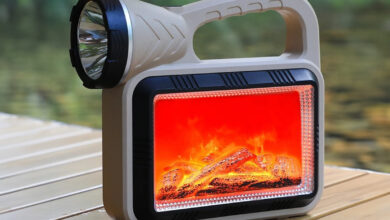The DiskMantler violently shakes hard drives for better rare-earth recovery

Rare-earth magnet recycling —
A nifty HDD disassembly tool, sure, but we also have a larger global need for magnets.

Enlarge / From magnets we came, to magnets we return.
Garner Products
There is the mental image that most people have of electronics recycling, and then there is the reality, which is shredding.
Less than 20 percent of e-waste even makes it to recycling. That which does is, if not acquired through IT asset disposition (ITAD) or spotted by a worker who sees some value, heads into the shredder for raw metals extraction. If you’ve ever toured an electronics recycling facility, you can see for yourself how much of your stuff eventually gets chewed into little bits, whether due to design, to unprofitable reuse markets, or sheer volume concerns.
Traditional hard drives have some valuable things inside them—case, cover, circuit boards, drive assemblies, actuators, and rare-earth magnets—but only if they avoid the gnashing teeth. That’s where the DiskMantler comes in. Garner Products, a data elimination firm, has a machine that it claims can process 500 hard drives (the HDD kind) per day in a way that leaves a drive separated into those useful components. And the DiskMantler does this by shaking the thing to death (video).
-
Insert the drive into the DiskMantler like you’re nostalgic for the VCR days.
Garner Products -
The DiskMantler shakes the drive until the screws fly out of the thing.
Garner Products -
The disassembled drive pops out or lands on a conveyor belt.
Garner Products -
The component parts that the DiskMantler breaks down to.
Garner Products -
The DiskMantler itself, which needs an air supply and power.
Garner Products
The DiskMantler, using “shock, harmonics, and vibration,” vibrates most drives into pieces in between 8–90 seconds, depending on how much separation you want. Welded helium drives take about two minutes. The basic science for how this works came from Gerhard Junker, the perfectly named German scientist who fully explored the power of vibrations, or “shear loading perpendicular to the fastener axis,” to loosen screws and other fasteners.
As Garner’s chief global development officer, Michael Harstrick, told E-Scrap News, the device came about when a client needed a way to extract circuit boards from drives fastened with proprietary screw heads. Prying or other destruction would have been too disruptive and potentially damaging. After testing different power levels and durations, Garner arrived at a harmonic vibration device that can take apart pretty much any drive, even those with more welding than screws. “They still come apart,” Harstrick told E-Scrap News. “It just takes a little bit.”
Improving the recovery and sorting ease of hard drives is itself a useful thing, but the potential for rare-earth magnet recycling is particularly attractive. Most rare-earth magnet recycling involves “long-loop” recycling, or breaking them down into rare earth elements and then putting those back into the magnet production stream, which is energy-intensive and not very cost-effective. Electric vehicles and wind turbines have huge amounts of rare-earth magnets in them but rarely see recycling. Hard drives, while individually small, are massive in scale, with roughly 259 million shipped in 2021.
One Canadian firm, based on a University of Birmingham-patented process, wants to reuse drive magnets more directly, creating new sources that don’t require extraction and aren’t quite so globally concentrated. That Canadian firm, HyProMag, uses robotics to find and extract drives’ permanent magnets, then sends the rest of the disk off for recycling.
The technology is not all there yet, but soon enough, it looks like something interesting will shake out.

